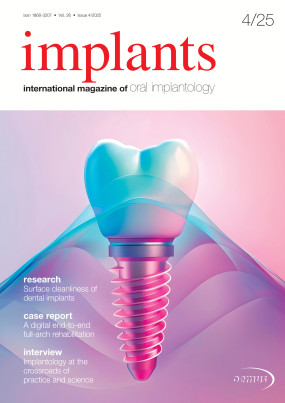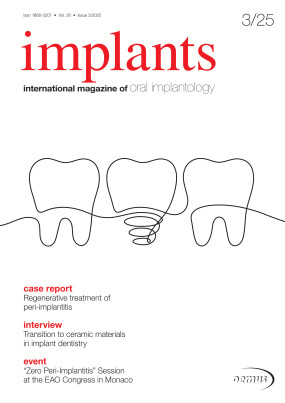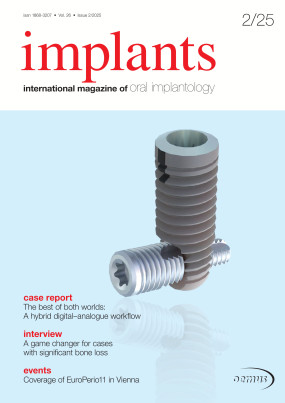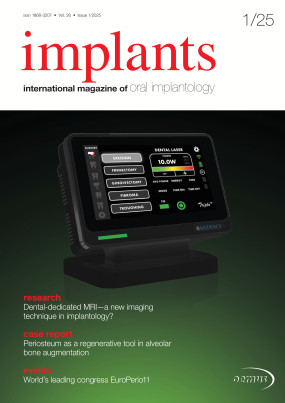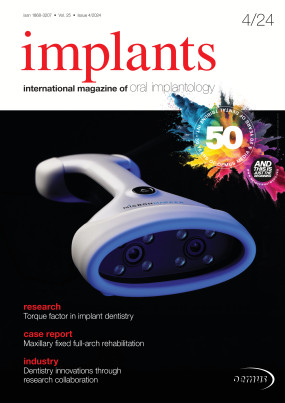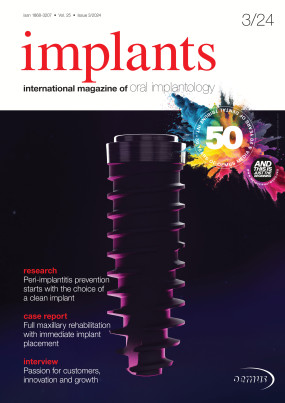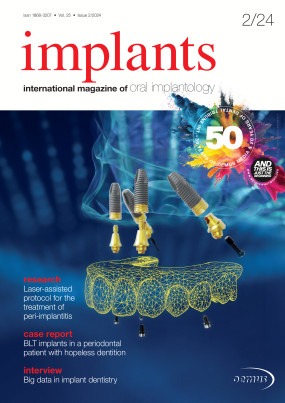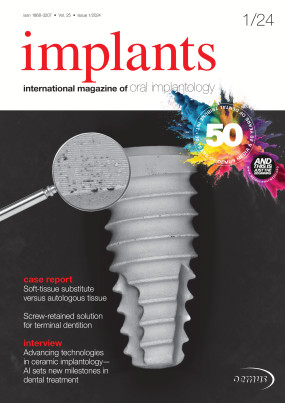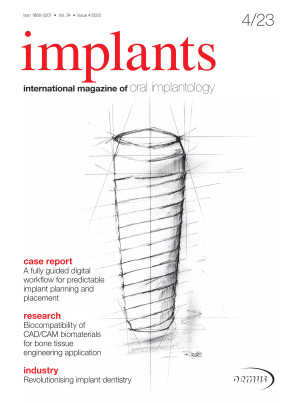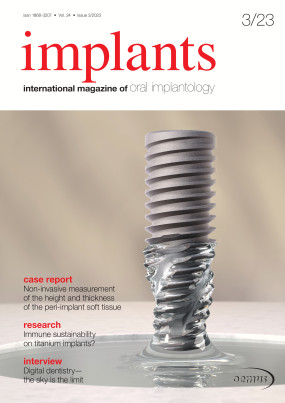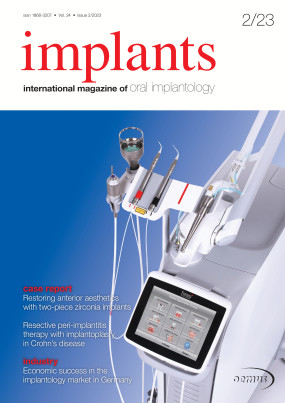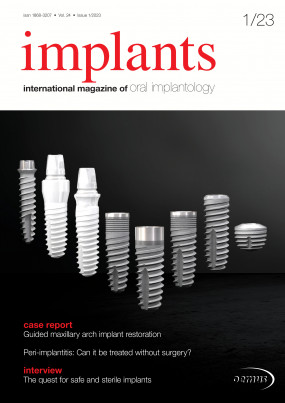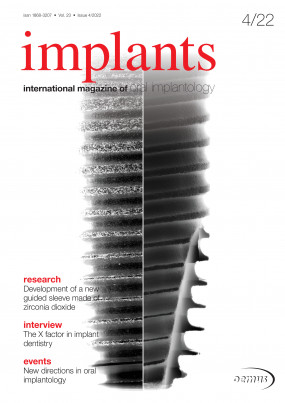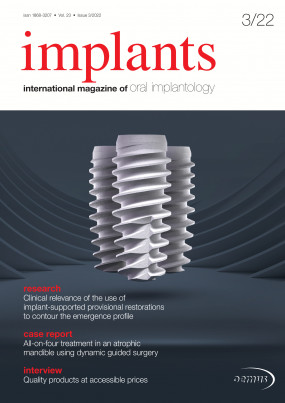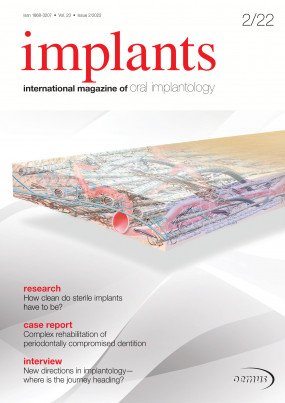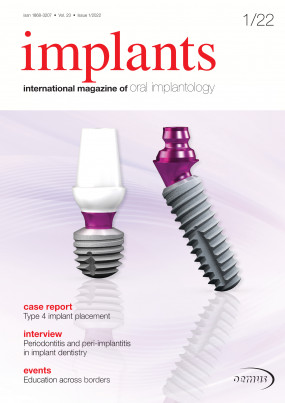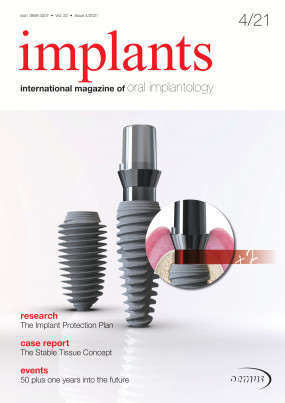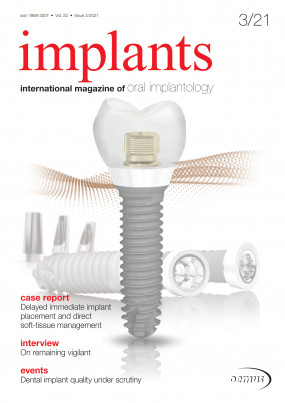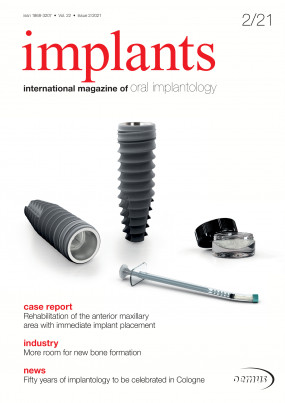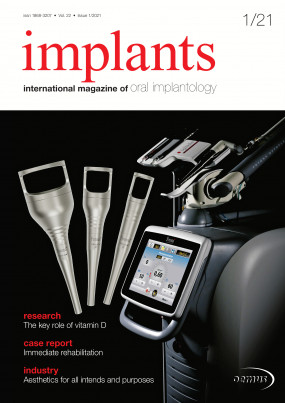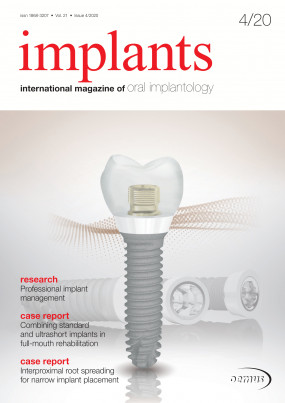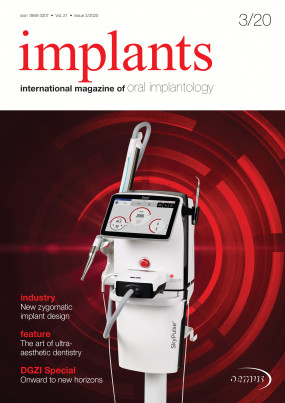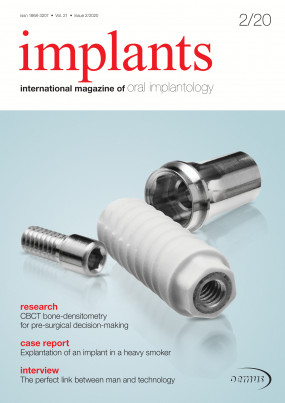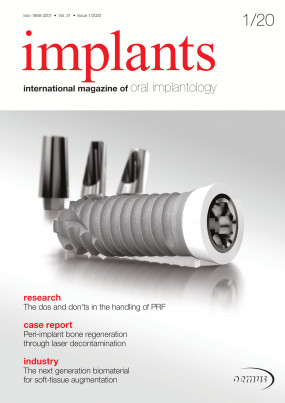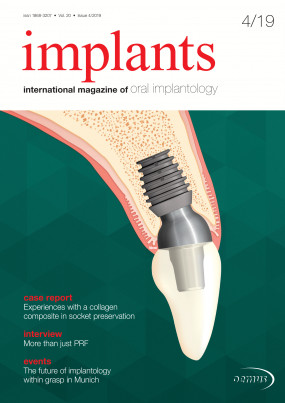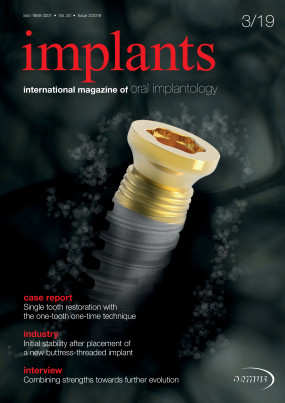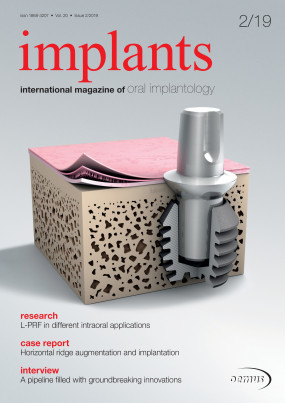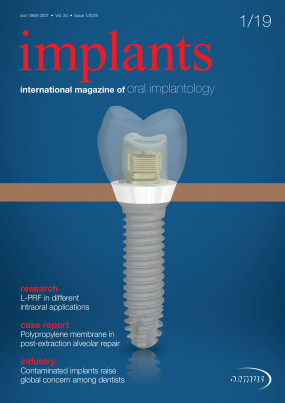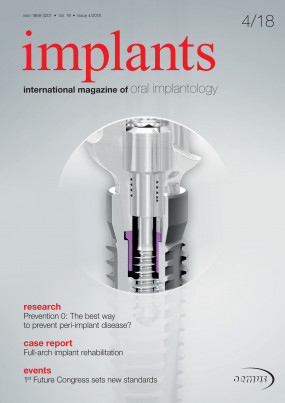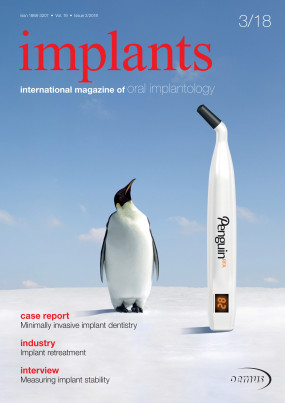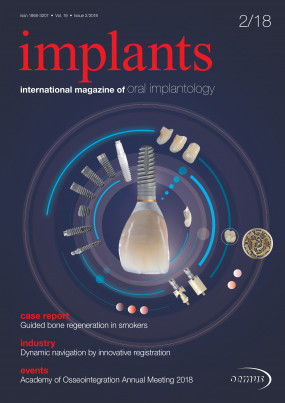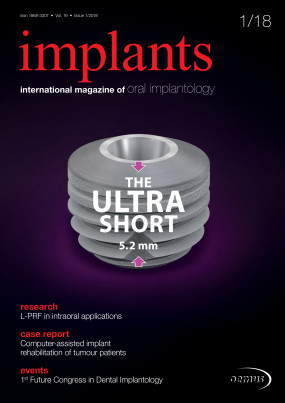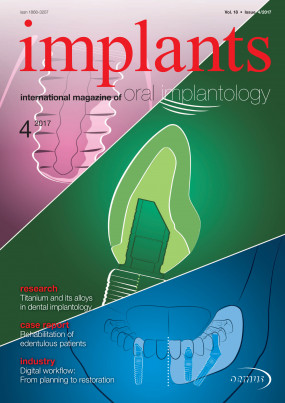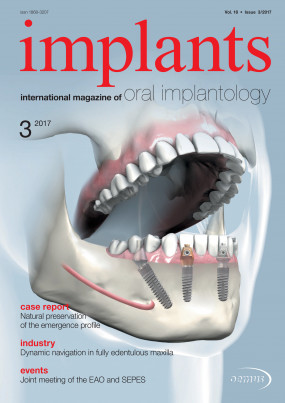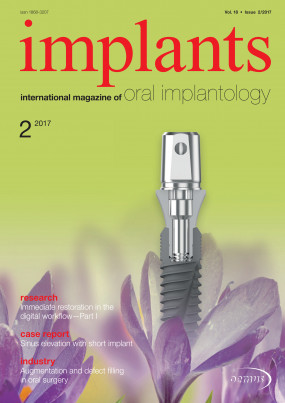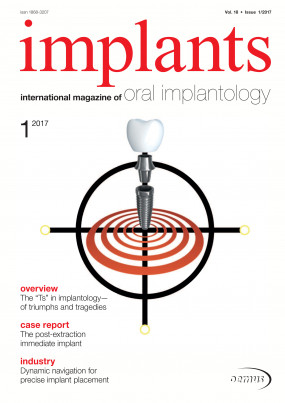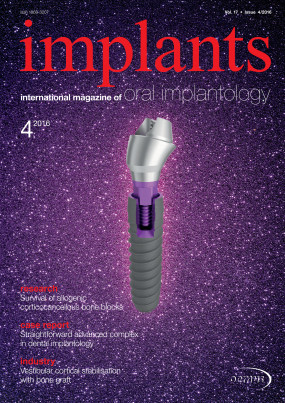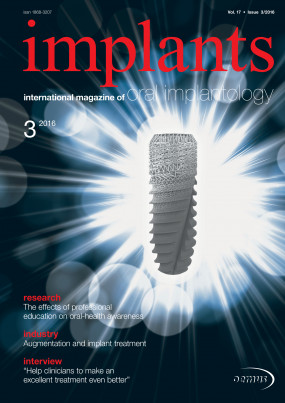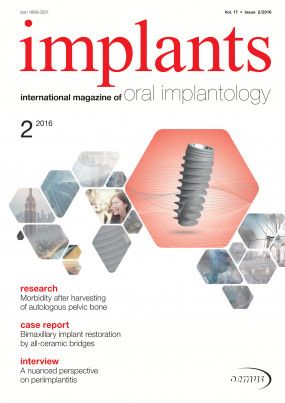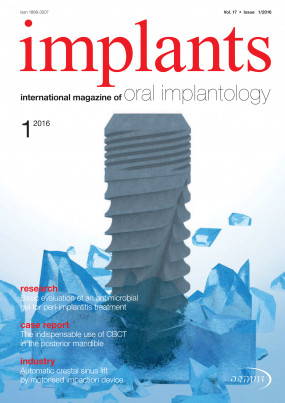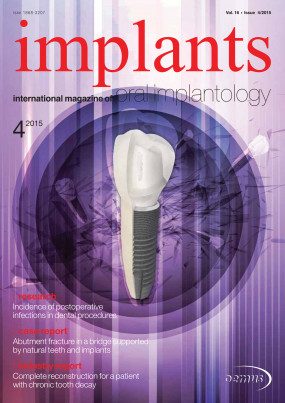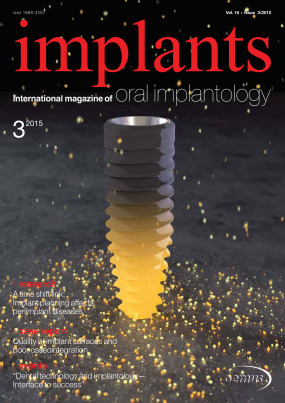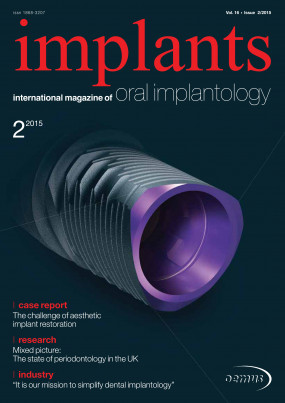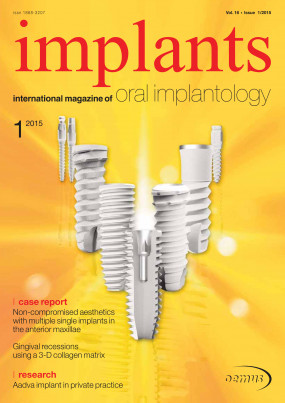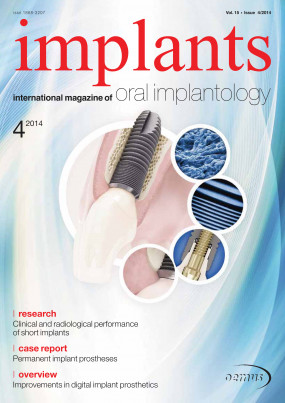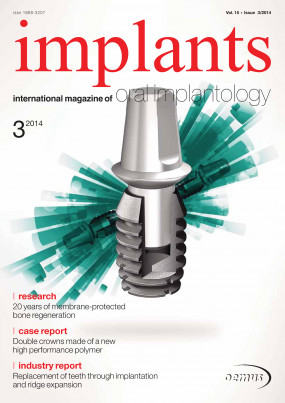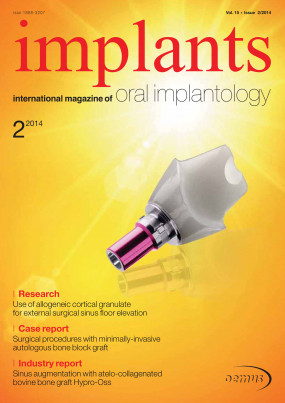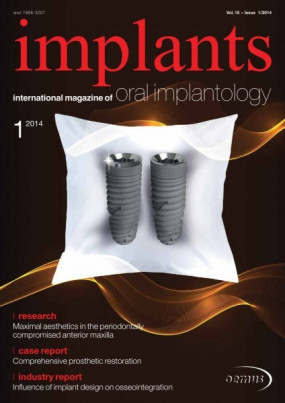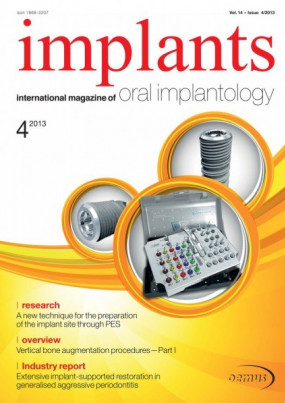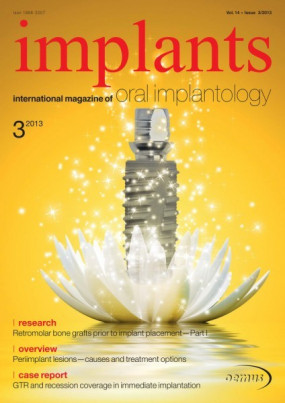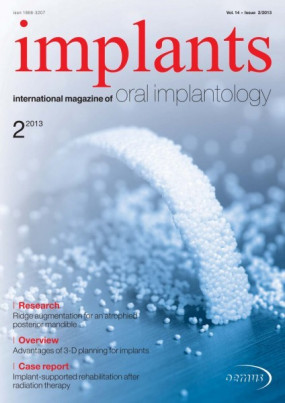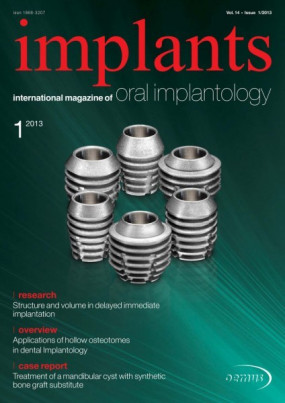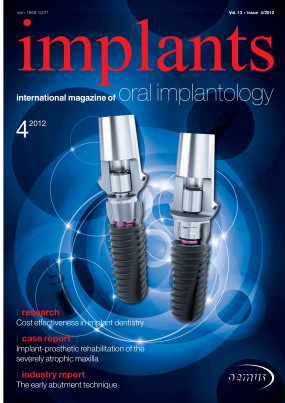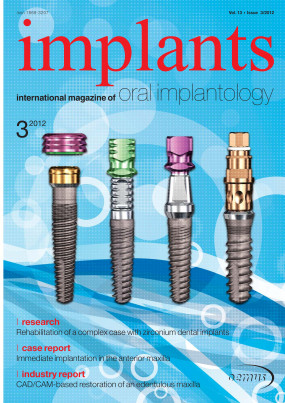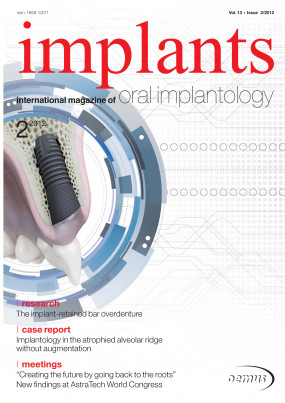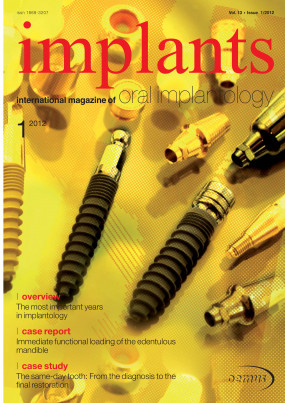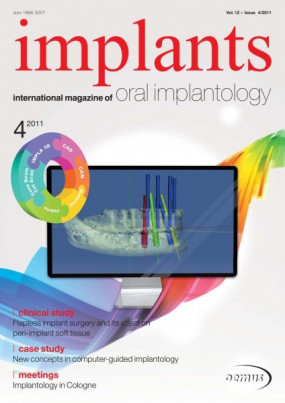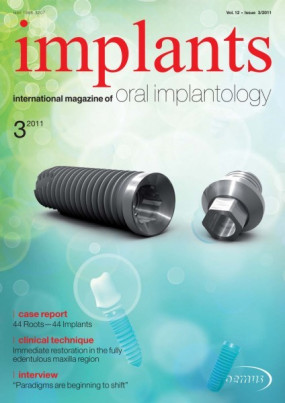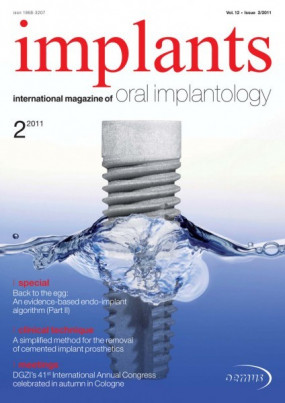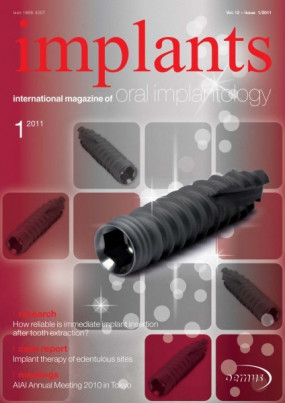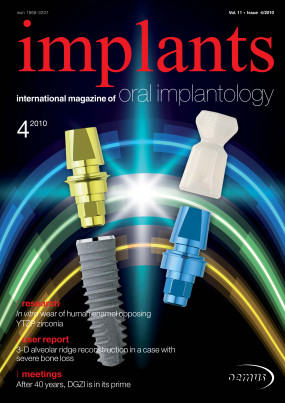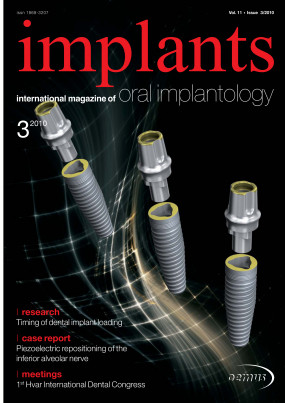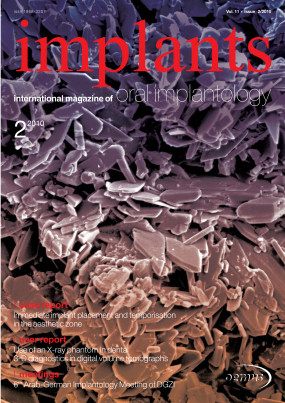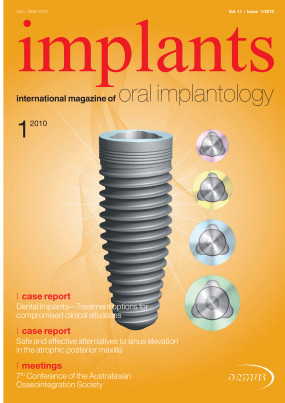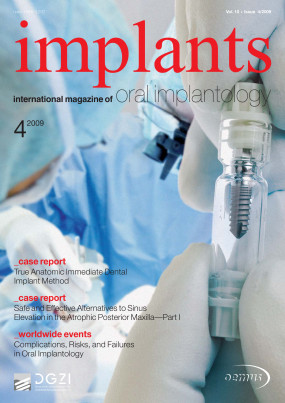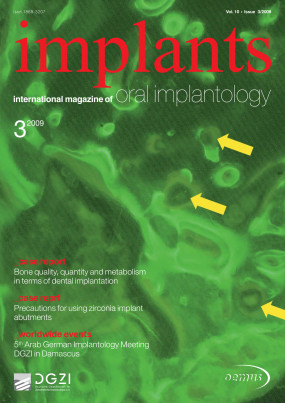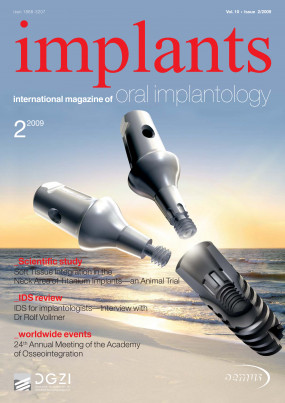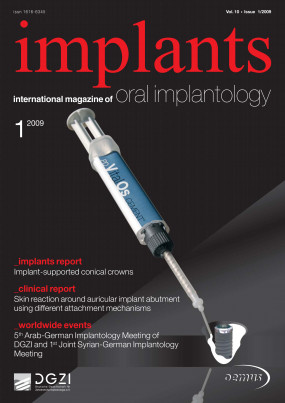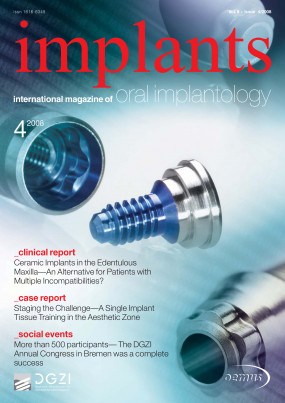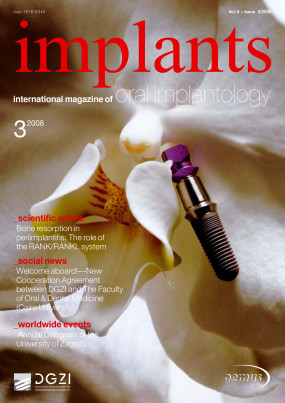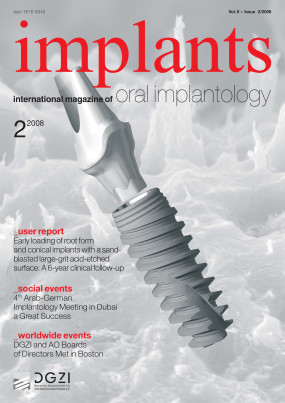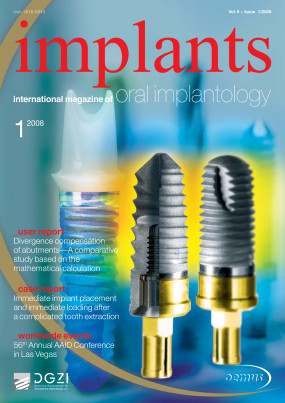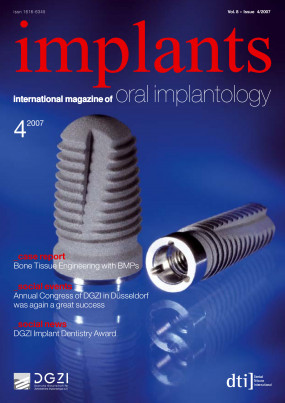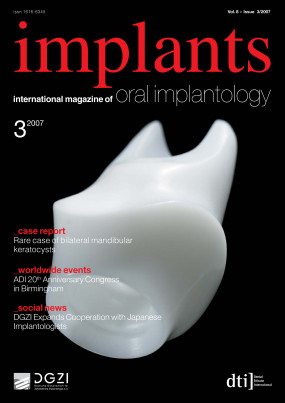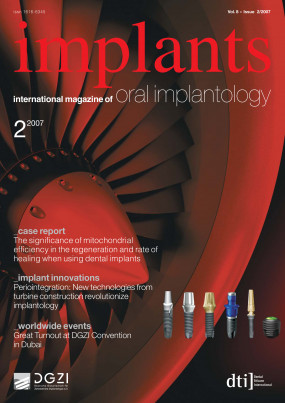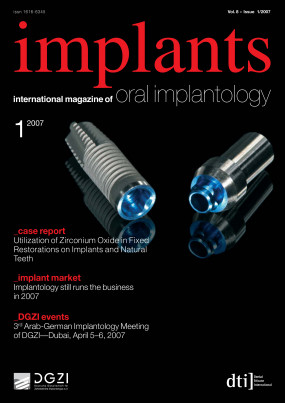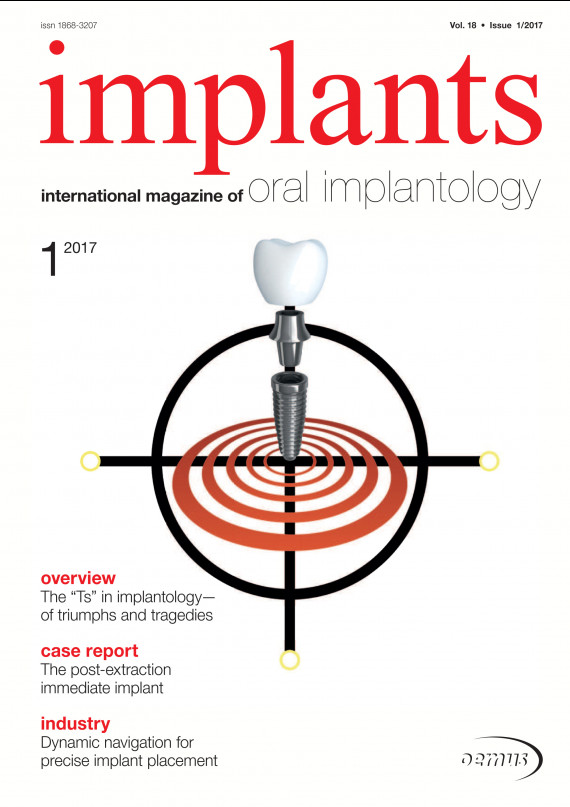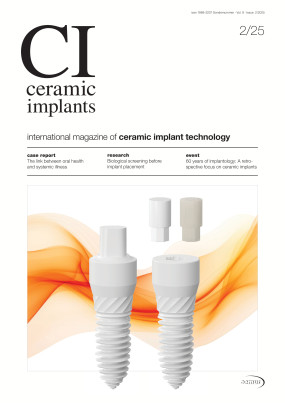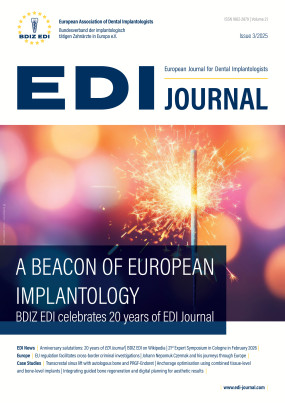Inhaltsverzeichnis
3
2017 seems to have plenty to offer with regard to implantology: The DGZI has already started invitations for its scientific awards presented at the 47th International Annual DGZI Congress on 29–30 September in Berlin/Germany. This includes the DGZI Implant Dentistry Award 2017 (5,000 EUR) as well as the DGZI Thesis Award 2017 (2,000 EUR). The final deadline for both of the two awards is 31 May 2017...
4
6
Implantology has become a commonplace in dentistry. Indeed, insertion techniques have progressed more and more in the past two decades, while the dental industry has provided users with improved implant surfaces and instruments. Hardly any other dental discipline has experienced more innovation and investments within such a short time span. These developments have been rewarded with a comprehensive product range and highly increased numbers of inserted implants that seemed out of reach only one and a half decades ago. However—despite all of this euphoria—implantology does not exclusively entail positive facets. Therefore, this article is designed to report on the “Ts” in implantology, on triumphs and tragedies...
16
The post-extraction immediate implant — A new approach for filling residual bone defects
Prof. Dr Mauro Labanca, Dr Ernesto Amosso, Prof. Dr Luigi F. Rodella, Italy
In international literature, a growing number of studies have assessed and quantified alveolar bone resorption following an extraction procedure. 1-4 After dental extraction, height and width of the residual bone ridge suffer a reduction that appears to be greater in the first 30 days 1 and about 50 per cent of the total resorption in the first 3 months 3 . The exact causes of this mechanism are controversial and currently under discussion. 4-8 In order to limit bone resorption after the act of extraction, several techniques have been proposed...
22
T R I N I A™ — Metal- free restorations
Prof. Dr Dr Rolf Ewers, Paolo Perpetuini, Dr Vincent J. Morgan, Prof. Dr Mauro Marincola, Richard Wu, PD DI Dr Rudolf Seemann, Austria/Italy/USA
There are several reasons not to use dental restorations made of metal. Possible disadvantages of metal are for instance the potential allergenicity (type IV allergy) and weight, density, as well as the long processing time. Furthermore, the colour of metals differs visibly from gingiva and teeth. Metal has in fact a great strength, but it is, however, much harder than the natural tooth. Metals are very good thermal conductors and isolate from temperature much worse than teeth. Every patient with deep fillings or cast gold inlays probably knows about these properties...
28
Dynamic navigation for precise implantation in cases of critical anatomy
Dr David Burgess, United Kingdom
Using the CBCT image as a map, dynamic navigation guides surgeons just like a GPS guides drivers. The clinician virtually plans where implants should be placed. During surgery, the navigation system dynamically tracks the drill and the patient’s jaw, providing guidance and visual feedback to ensure the implants are placed according to plan...
32
Osteo-mucous restoration and implantsupported overdenture
Dr Ugo Torquati Gritti, Dr Daniel Vrespa, Buongiovanni Armando, Giancarlo Riva, Italy
The improvements of living conditions and medical care in the Western world have helped to increase the live expectancy in the population. The simultaneous evolution of prophylaxis in dentistry has also influenced the raising age, in which edentulism manifests. Nevertheless, even in the presence of undeniable improvements in dental care there is registered an increase of edentulous patients that need a full rehabil - itation. Indeed, a statistical analysis carried out in the US in 1991 shows that 33.6 million people need a full denture and also points out that in 2020 this number will increase to 37.9 million people (Fig. 1)...
36
Resonance Frequency Analysis (RFA) is today a standard method to measure implant stability, but the measurement unit ISQ itself needs to be explained. Prof. Lars Sennerby is one of the developers and re earchers behind the RFA-technique and will sort things out for us below...
42
From 12 to 13 November 2016, the annual ISOI Meeting of the Japanese DGZI fellow society took place in Tokyo. Having been founded ten years ago and now featuring more than 700 members, the International Society of Oral Implantology (ISOI) is among the most important DGZI partner societies. Both DGZI and ISO members greatly appreciated the palpable hospitality and close personal relationships during the congress...
